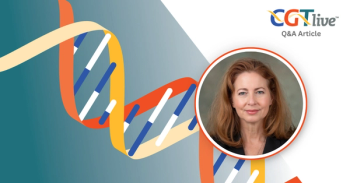
Hemophilia B Gene Therapy Well-Tolerated, Reduced Need for FIX Replacement Therapy
Annualized bleeding rate fell to 0 at a median of 58 weeks after infusion.
The adeno-associated virus vector (AAV) gene therapy BBM-H901 was well-tolerated and reduced the need for enzyme replacement therapy in patients with
First author Feng Xue, MD, Institute of Hematology & Blood Diseases Hospital, Chinese Academy of Medical Sciences & Peking Union Medical College, Tianjin, China, and colleagues conducted the study to evaluate BBM-H901. The study was conducted at the Institute of Hematology & Blood Diseases Hospital. The gene therapy uses the engineered AAV843 capsid and expresses the Padua variant of factor IX (FIX).
“On the basis of preclinical studies, we launched a phase 1 trial on F9 gene transfer using BBM-H901. In contrast with all previous studies in this setting, a prophylactic glucocorticoid treatment 1 week before AAV vector infusion was explored to reduce the potential immune response against AAV capsid,” Xue and colleagues wrote.
Xue and colleagues enrolled 10 male participants in the study out of 12 screened between October 2019 and January 2021. Two were excluded due to hepatitis C infection. Participants had a mean age of 29.5 years (range, 20-59; standard deviation [SD], 11.0). Prior to enrollment, 6 participants on prophylactic therapy had a mean annualized bleeding rate (ABR) of 8.3 (SD, 3.5) and 4 participants using episodic treatment had an ABR of 41.3 (SD, 19.1
READ MORE:
The 10 participants received a single intravenous dose of 5 × 10¹² vg/kg of BBM-H901 after 1 week of prophylactic 1 mg/kg oral prednisone. This dose continued for another week after infusion before tapering for a total course of around 8-10 weeks. Prednisone use was allowed to resume based on liver function for FIX activity during follow-up and participants were also allowed to receive FIX replacement therapy on demand or as prophylaxis after infusion.
Patients were followed up for safety analyses for 1 year after infusion and for a median of 58 weeks (IQR, 51.5-99.5) for activity analyses. The study was monitored by an independent safety monitoring committee. Investigators found that mean FIX activity reached 26.9 IU/dL (SD, 20.5) after follow-up. Overall, median ABR, which was 12 (IQR, 0.8-2.3) at baseline, fell to 0 after infusion (P = .0092). Similarly, median number of FIX concentrate infusions fell from 53.5 (IQR, 38-74) to 0 (P <.0001) after infusion. Median number of target joints for all participants also fell from 1·5 (IQR, 0.8-2.3) before infusion to 0 (P = .0031) after.
No participants experienced serious adverse events (AEs) of grade 3 or 4. Grade 1-2 AEs included pyrexia (n = 1; 10%) and aminotransferase elevations (n = 1; 10%). Two participants had alanine and aspartate aminotransferase elevations accompanied with decreases in FIX activity. No participants had FIX inhibitors and all developed AAV antibodies after infusion.
“Compared with other gene therapy trials for hemophilia B, faster expression of transgene was observed in this study... We believe that the rapid expression might be attributed to rapid delivery of gene into liver by the strong liver tropism of AAV843 capsid, because vector DNA in plasma was found to be rapidly cleared by at least three logs within 24 hours, indicating the rapid liver uptake and rapid uncoating of the AAV843 capsid in addition to the double-stranded AAV genome vector genome structure. Rapid uncoating might favor rapid degradation of the capsid protein within the cells, and possibly reduce the delayed T cell immune response against capsid protein-containing hepatocytes,” Xue and colleagues noted.
Investigators also performed exploratory single-cell RNA sequencing analyses that suggested that prophylactic glucocorticoid treatment reduced the baseline amounts of antigen-presenting cells, CD4+ T cells and CD8+ T cells, and upregulated Treg activation, showcasing a possibly useful regimen to blunt immune responses. This regimen is not yet validated and longer follow-up is also needed to confirm the long-term efficacy of BBM-H901.
REFERENCE
Xue F, Li H, Wu X, et al. Safety and activity of an engineered, liver-tropic adeno-associated virus vector expressing a hyperactive Padua factor IX administered with prophylactic glucocorticoids in patients with haemophilia B: a single-centre, single-arm, phase 1, pilot trial. Lancet Haematol, 2022. Published online May 19, 2022. doi: 10.1016/ S2352-3026(22)00113-2
Newsletter
Stay at the forefront of cutting-edge science with CGT—your direct line to expert insights, breakthrough data, and real-time coverage of the latest advancements in cell and gene therapy.

















































